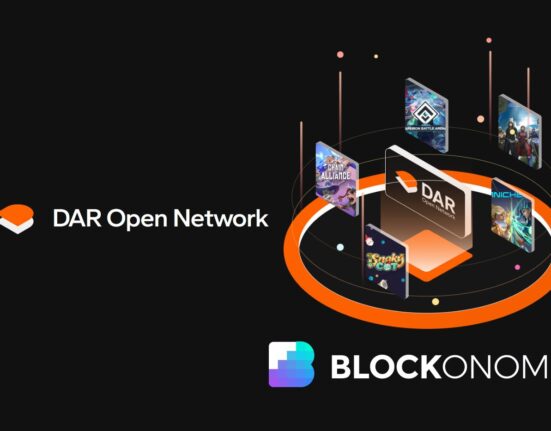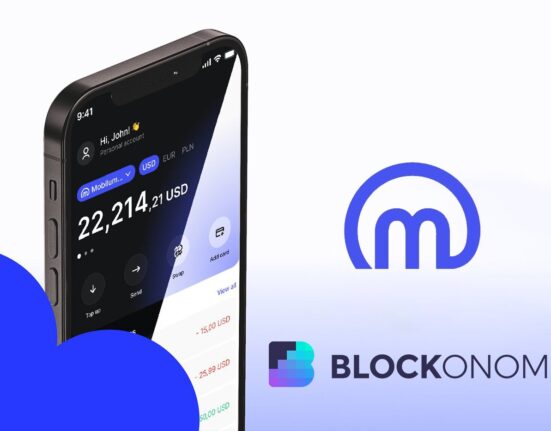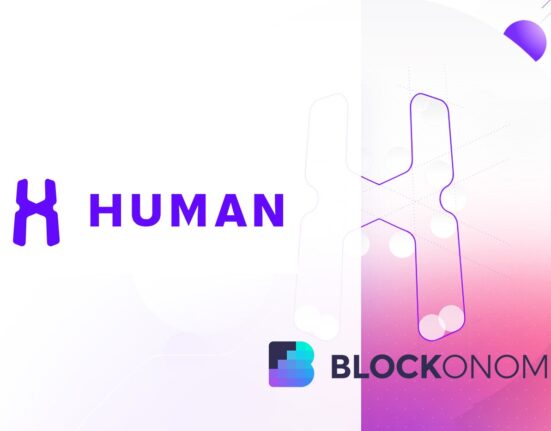The post The Metaverse Explained: A Easy-To-Learn Guide For All appeared first on Coinpedia Fintech News
The concept of the Metaverse has become a hot topic in the technology world, especially since Facebook rebranded as Meta in 2021. Many technology enthusiasts see the Metaverse as the next big step in the evolution of the internet. In recent years, it has gained massive momentum, thanks to the rapid growth of key technologies that power it. These technologies include Virtual Reality, Augmented Reality, Blockchain, Extended Reality and Artificial Intelligence. This combination of tech allows for exciting possibilities like realistic virtual interactions, digital economics, and dynamic virtual experiences. In short, the Metaverse is not just a trend; it is a technological leap that is transforming how we live, work and play in the digital world. The interesting part is we are at the primary stage of this evolution of the Metaverse, so we are yet to discover how far it will reshape our lives.
Highlights
The Metaverse is a super-advanced internet where you step into 3D worlds, not just browse web pages.AI, Blockchain, Extended Reality, and 3D modelling are the key technologies shaping the Metaverse.From Snowcrash to Meta, the Metaverse has a rich history.It is a digital realm with differing opinions on how it should work.You have three popular options to enter this digital world.The Metaverse economy is thriving and makes money despite being free to use.You can invest in the Metaverse through crypto and Metaverse company stocks.Investing in the Metaverse carries risks like market fluctuations and uncertain regulations.
1. What is Metaverse is Simple Terms
The Metaverse is a super-advanced internet where you don’t just browse web pages but step into interactive 3D worlds. It is a mix of virtual reality and augmented reality, making everything feel real and exciting. In simple terms, it’s a digital universe, where you can do almost anything, together with others, without leaving your computer or VR headset.
1.1. Elements That Make Up The Metaverse
The metaverse is made up of several key elements:

- Infinite User Capacity: The Metaverse can accommodate millions of people at once. It can offer each with their own unique experiences.
- Universal Connectivity: Different parts of the metaverse can seamlessly communicate with each other.
- Continuous Availability: The Metaverse, similar to the internet, is always accessible, 24*7.
- Real-Time Interaction: People can engage with each other in real-time.
- Vast and Varied Worlds: The Metaverse offers expansive and diverse digital environments.
- Immersive 3D Environments: An opportunity to interact in three-dimensional spaces is what makes every Metaverse experience, unique and more likelike.
- Instant Responsiveness: Everything in the Metaverse responds quickly to your actions.
1.2. Technologies to Have the Biggest Impact on Metaverse Development
The technologies with the biggest impact on Metaverse development are:
- Artificial Intelligence: Powers virtual world interactions, NPC, and dynamic content generation, enhancing realism and user experiences.
- Blockchain: Secures digital assets, enables digital ownership, and ensures trust in the Metaverse economy and transactions.
- Brain-Computer Interface: Allows direct brain interaction with the Metaverse, unlocking new levels of immersion and control.
- Extended Reality: Combines virtual and real worlds, enhancing immersion through AR and VR devices.
- Internet of Things: Connects real-world objects to the Metaverse, creating interactive, date-rich environments.
- Spatial and Edge Computing: Optimises data processing, reducing latency and enabling smoother Metaverse experiences.
- 3D Modelling and Reconstruction: Facilities realistic world-building and object creation, enriching Metaverse environments with detailed assets.
 Do You Know!
Do You Know!
A recent survey of over 5,500 people, published in Soocial, revealed that 56% of those interested in the Metaverse are male, and 42% are female. Interestingly, it is predominantly driven by men, but there is a significant female interest in the technology’s potential.
2. A Brief History of the Metaverse: Timeline
From Neal Stephenson’s Snowcrash to Facebook’s Meta, the history of the Metaverse has a lot of interesting layers. Here is the short timeline of the evolution of the Metaverse:

- 1992: Neal Stephenson’s ‘Snowcrash’, a novel about virtual avatars and cyberspace, introduces the term ‘Metaverse’.
- 2003: Linden Lab launches Second Life, an early Metaverse-like 3D environment with millions of users and cultural impact.
- 2006: Roblox, a virtual platform for games, emerges but takes years to gain mainstream popularity.
- 2011: Ernest Cline’s ‘Ready Player One’ popularises the concept of everyday people using VR to enter a virtual world.
- 2019: Fortnite becomes a second hub, showcasing interoperability and diverse IP coexistence, hinting at Metaverse potential.
- 2021: Facebook’s rebranded to Meta brings the Metaverse into the public consciousness; Meta Horizon offers VR experiences.
Currently, in the Metaverse, we have VR and AR games, virtual art galleries, real estate spaces, and places to socialise. By the end of 2023, we expect to see better avatars, more advanced art galleries, mixed realities and other exciting things.
Something You Should Know!
Meta’s grand Metaverse vision faced some strong headwinds in the beginning stage. In a November 2021 Morning Consult survey, a surprising 68% of respondents showed no interest in Meta’s virtual reality world.
Why? Well, most people were not thrilled about being bombarded with advertisements everywhere they turned. Plus, privacy concerns loomed large in the virtual world, with worries about person data being used without consent.
3. Who Controls the Metaverse
The Metaverse is not the domain of a single entity or company; it is a collaborative endeavour. Multiple companies, groups, and developers will play crucial roles, adhering to established rules and protocols to maintain fairness and organisation. This decentralised approach ensures shared control, preventing any one entity from dominating. Decisions will be made collectively, promoting diversity and inclusivity. The aim is to cultivate a dynamic and accessible Metaverse where everyone can participate and contribute, fostering innovation, creativity, and equitable engagement across this emerging digital frontier.
3.1. Facebook Metaverse: Meta’s Metaverse & The Metaverse
Surprisingly, some think Meta’s Metaverse and the Metaverse are identical, partly because Meta’s rebranding brought the futuristic concept into mainstream awareness. However, there is a significant distinction between them. The below given table can express this better.
| Parameters | Meta’s Metaverse | The Metaverse |
| Meaning | It signifies Facebook’s transformation and commitment to creating a virtual universe. | It is a forward-looking concept describing an immersive digital realm where people interact and work, transcending physical boundaries. |
| Origin | The term arises from Facebook’s rebranding, emphasising its ambition to shape the Metaverse. | Originating in Neal Stephenson’s 1992 novel ‘Snow Crash,’ it envisions a future virtual reality landscape. |
| Founders | Founded by Mark Zukerberg and others, Meta drives Metaverse development. | As a futuristic idea, the Metaverse has no singular founders; it is a collective vision. |
| Goal | Meta aspires to construct a comprehensive Metaverse, integrating work, socialising and more. | It aims to create a digital world where people can work, socialise and coexist. |
| Public Company | Meta went public in 2012, publicly traded with shareholders. | The Metaverse concept is not confined to any single public company; it is a broader digital vision without centralised ownership. |
In short, Meta’s Metaverse is a company’s virtual shared space, while the Metaverse is a universal internet world enabled by advanced technologies like VR and AR.
4. How Does the Metaverse Work
The Metaverse is a developing digital realm with diverse opinions on its functioning. Its precise mechanics are still evolving, but it is essentially a complex, interconnected digital ecosystem where people can explore, create, and interact using advanced technologies. The Metaverse primarily relies on 3D tech, real-time collaboration software and blockchain-based finance tools. Anyway, key factors, like how different virtual worlds can interact, transferring data, governance and user interfaces, will shape how the Metaverse ultimately operates.
4.1. How to Get into Horizon Worlds
At present, the Metaverse is theoretical in nature, so it is impossible to find a single gateway to enter horizon worlds. The three popular options you can use to enter this amazing world are given below:
4.1.1. How to Enter the Metaverse Using Virtual Reality Headsets
It is one of the most popular options. To explore this option, the primary requirement is you should purchase a virtual reality headset.
- Step 1: Purchase a virtual reality headset, such as Oculus Rift, HTC Vive, or Oculus Quest.
- Step 2: Set up the VR headset according to the manufacturer’s instructions.
- Step 3: Download and install a social VR experience like Horizon Worlds, VRChat, or Rec Room on your VR headset.
- Step 4: Create an account or log in, and you are ready to explore the Metaverse in immersive VR.
4.1.2. How to Enter the Metaverse through Free Accounts on Multiple-Platform Games
It is a very interesting option. It is ideal for game enthusiasts.
- Step 1: Choose a platform like Roblox, Fortnite, or Minecraft.
- Step 2: Go to the official website of the chosen platform.
- Step 3: Sign up for a free account by providing the required information.
- Step 4: Download and install the platform’s application on your PC, mobile device, or gaming console.
- Step 5: Log in using your newly created account and start experiencing the Metaverse in your chosen game, accessible across various devices.
4.1.3. How to Enter the Metaverse through Ethereum-Based Virtual Worlds
It is an extremely important option. It is generally opted by virtual real estate enthusiasts.
- Step 1: Explore blockchain-based virtual worlds like The Sandbox or Decentraland.
- Step 2: Connect your cryptocurrency wallet to the chosen platform, following their specific wallet integration process.
- Step 3: Acquire the platform’s native tokens (for example, SAND for The Sandbox or MANA for Decentraland) through a cryptocurrency exchange.
- Step 4: Use these tokens to buy virtual land, assets, or participate in activities within the Ethereum-based virtual world.
- Step 5: Start navigating and interacting within these decentralised Metaverse environments, where you have ownership of digital assets.
In the future, there may be a central Metaverse hub that simplifies entry.
5. How Big is the Metaverse Economy
The Metaverse economy is thriving, generating substantial revenue despite being free to use. In the case of Fortnite, users willingly spend $5.8 billion in 2021 on cosmetic items. Beyond just companies selling digital goods, the Metaverse primarily revolves around peer-to-peer transactions. Platforms like Roblox enable users to create and monetise their games, fostering a dynamic, self-sustaining economy where money circulates within the ecosystem. Meanwhile, in terms of investment, some invest in digital real estate, while others back publicly traded Metaverse-related companies and tech giants like Apple.
An Interesting Fact!
The Metaverse market is on a remarkable journey. From $478.7 billion in 2020, it is projected to soar to $783.3 billion by 2024, growing at a fantastic 13.1% annually, as per an article published in Soocial.
What’s fuelling this surge? This is the big question at this juncture. Certainly, Metaverse applications in gaming, AR and VR are stealing the spotlight. But there is a twist: the sustainability of this growth depends on how quickly developers embrace new tech.
5.1. The Role of NFTs in the Metaverse
NFTs and blockchain technology establish digital ownership, bridging real-world identity with the Metaverse, ensuring authenticity and value in this evolving digital landscape. Companies, like Metaverse Group, backed by NFTs, facilitate property transactions in the Metaverse’s virtual worlds. Even traditional businesses like Nike are entering the virtual realm, using NFTs for virtual sneakers and digital artifacts.
5.2. How to Invest in the Metaverse
Primary, there are two popular ways through which you can invest in the Metaverse.
- Cryptocurrency Investment: Invest in cryptocurrencies, like Decentraland’s MANA token, widely used in Metaverse transactions. Buy and hold these digital assets as they gain value within the expanding Metaverse economy, potentially yielding substantial returns.
- Stocks of Metaverse Companies: Invest in companies actively shaping the Metaverse, such as Meta or Niantic. By purchasing their stocks, you can participate in the growth and innovation driving the Metaverse’s development, potentially benefiting from their success.
5.3. Top Metaverse Companies in the World
Meta, Epic Games and Microsoft are the three prime Metaverse companies.
5.3.1. Meta
Meta, led by CEO Mark Zukerberg, is reshaping as a metaverse-first company, investing heavily to develop the core technologies required for a thriving Metaverse, including social platforms and virtual spaces, although it faces financial challenges.
5.3.2. Epic Games
Epic Games, renowned for Fortnite and the Unreal Engine, secured substantial funding, notably from Sony, to create a Metaverse emphasising user-brand interaction, offering a unique, ad-light approach.
5.3.3. Microsoft
Microsoft’s vision extends to integrating the Metaverse into Teams, providing holographic experiences, avatars, and AI tools, fostering virtual collaboration. They collaborate with Accenture to create Mesh-enabled immersive spaces, enhancing onboarding experiences in shared virtual environments.
5.4. Risks of Investing in the Metaverse
- Market Volatility: Metaverse investments can face rapid value fluctuations.
- Regulatory Uncertainty: Evolving regulations may impact Metaverse business models.
- Technological Risks: Technical glitches, security breaches, and evolving tech pose threats.
- Competition: Intense rivalry as numerous players vie for Metaverse dominance.
- Monetisation Challenges: Realising returns in the Metaverse may prove complex.
Surprising Fact!
In a recent survey, published in Soocial, over three-quarters of people expressed concerns about the Metaverse, believing it could have a negative impact in society. They argued that the Metaverse’s immersive nature could pull individuals so deeply into a virtual world that it might disrupt their real lives.
6. What Will be The Future of Metaverse
The future of the Metaverse remains uncertain, with varying opinions. Some envisions it enhancing our lives, offering unique experiences beyond the physical world. However, skeptics see it as an extension of current digital experiences, potentially worsening issues like disinformation and addiction. A 2022 survey showed divided expectations, with 54% anticipating a fully immersive Metaverse for billions, and 46% doubting it.
7. Endnote
In conclusion, the Metaverse is a concept that blurs the lines between reality and the digital realm. Its evolution is still ongoing, and its final form remains uncertain. As technology advances and our understanding of this virtual universe deepens, we must remain open to the possibilities it presents. Whether it becomes a utopian oasis of innovation or a dystopian echo chamber of digital excess, the Metaverse will undoubtedly shape the future of human existence in ways we can only imagine.
8. FAQs
The Metaverse is a virtual, interconnected world where people can interact, work, and play using digital avatars and immersive technology.
You can access the Metaverse through various devices like VR headsets, augmented reality glasses, or even your computer and smartphone, depending on the platform.
In the Metaverse, you can socialise, attend events, work, shop, play games, create content, and explore limitless virtual experiences.
No, the Metaverse includes VR but also encompasses augmented reality (AR) and other technologies, creating a broader, interconnected digital universe.
Privacy and security are important concerns. Platforms are working to ensure user safety and protect personal information, but it is crucial to be cautious and mindful of your online presence.
Yes, you can earn money in the Metaverse through various means, such as virtual real estate, selling digital assets, participating in the gig economy, or creating and selling virtual goods and services.



 Do You Know!
Do You Know!



